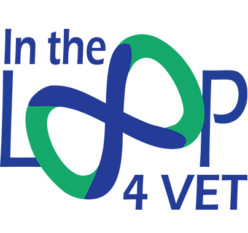- IO1 – Graduate tracking toolkit for VET providers
First output is a toolkit for generating and collecting graduate tracking data
Responding to the problem of inadequate and ad hoc graduate tracking arrangements at the level of VET providers, the main aim of O1 is to enhance data collection capacities by making available a toolkit for collecting evidence on graduates’ career paths. Given the diversity of VET graduate tracking measures in terms of the level of implementation and type of tracking, this output develops methods of data generation and collection (survey, administrative, synergistic). In particular, a survey tool and guides for data collection synergies and data harvesting from open data sources will be developed and delivered as an integrated tracking toolkit, while being usable in its separate functions as well. The toolkit will be designed for non-expert use by VET managerial and/or administrative staff and it will facilitate them to set up a data collection mechanism by taking advantage of three complementary ways of generating data on the progress of VET training recipients.
Results OUTPUT 1:
- IO2 – Tracking data and provision performance correlation mechanism
Result of Output 2 is a tracking data and institutional performance correlation mechanism in the form of resources for the improvement of data uses
The reported low usage rates of graduate tracking data reflect the need for VET providers to increase their capacities in exploiting such data in ways that increase the quality of provision at provider level. This output develops the necessary resources for VET providers to support the selection of institutional quality parameters in need of review and adjustment (e.g. curricula and programmes, training media, guidance services, standards and qualifications offered). The main function of this output is to train VET providers in the strategic identification of the appropriate ways of using tracking data to monitor any of the above mentioned parameters of provision quality. A digital tool will be developed to assist in the process
Results OUTPUT 2:
- IO3 – VET provision adapation framework
At the end of IO3 development there will be adaptation framework, particularly geared towards the improvement of providers’ capacities for responsiveness to labour market needs
This output focuses on specific areas of VET provision quality management and institutional, strategic decision-making. To the extent that empirical research across EU VET educational contexts shows, first, that the capacity for self-assessment on the part of VET providers is in need of improvement, and, second, that systemic reforms often do not reach VET providers, this output is precisely designed to address these caveats. It provides a comprehensive framework and resources for targeted interventions in specific fields of VET provision quality. Essentially, the objective is to design resources for i) developing innovative guidance and marketing schemes to prospective students, ii) responding to skills shortages, local competition or regarding financing, and a decision making-support tool for iii) supporting procedures for reviewing and adjusting curricula, training programmes, materials and media, and, finally, qualifications offered. These resources will constitute a framework for independent adaptation of the above mentioned determinants of provision quality.
Results OUTPUT 3:
- IO4 – Recommendations of VET providers and repository of VET provision adaptation results
The last Output is recommendations paper meant to function as a dissemination vehicle for the uptake of project results
This project output develops recommendations for the uptake of project results and a digital repository for interactive reporting on the feedback loop mechanism. As a permanent infrastructure, the interactive reporting repository is a collaborative repository that serves simultaneously various needs (interoperability between feedback loops, data comparability and sharing). VET providers will be able to use the database to create reports and log feedback loop data, facilitate insights from comparisons between own performance against aggregate scores of institutional quality metrics and benchmarks; and to initiate or enter into collaborative and cross-sectoral feedback loops. The objective is to develop the resources that will enable the creation and pilot-testing of the InTheLoop4VET network.
